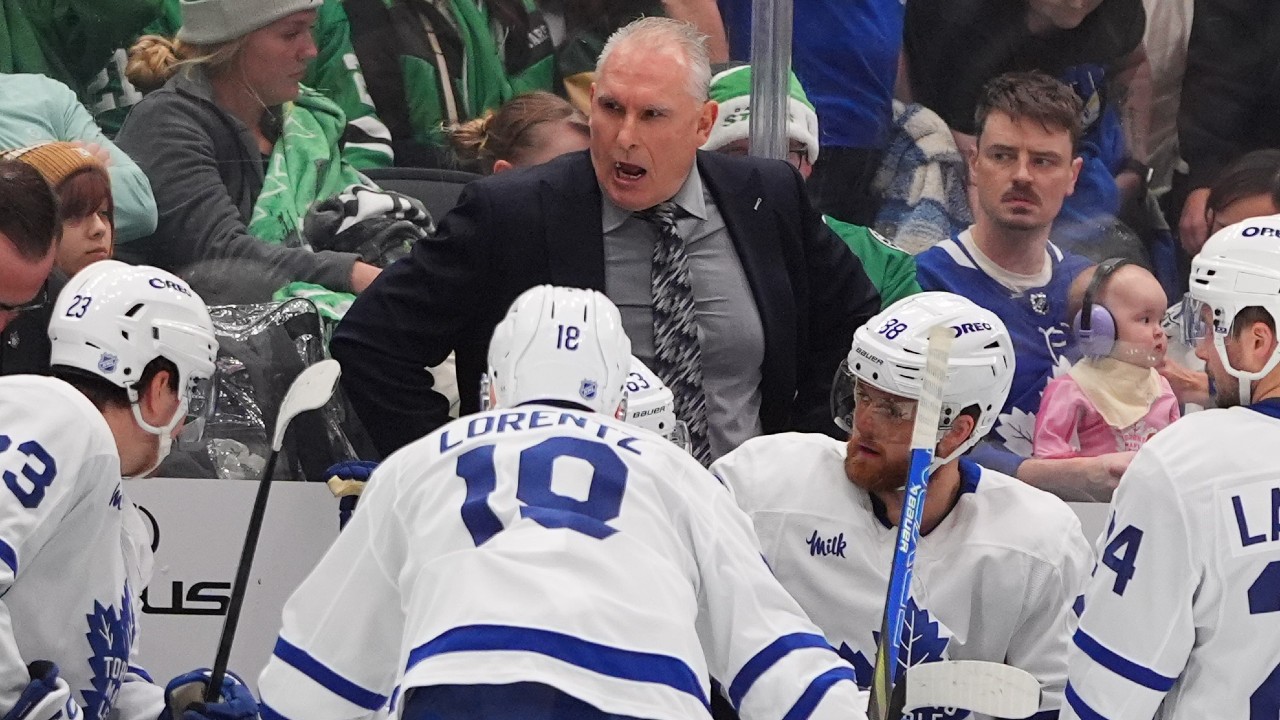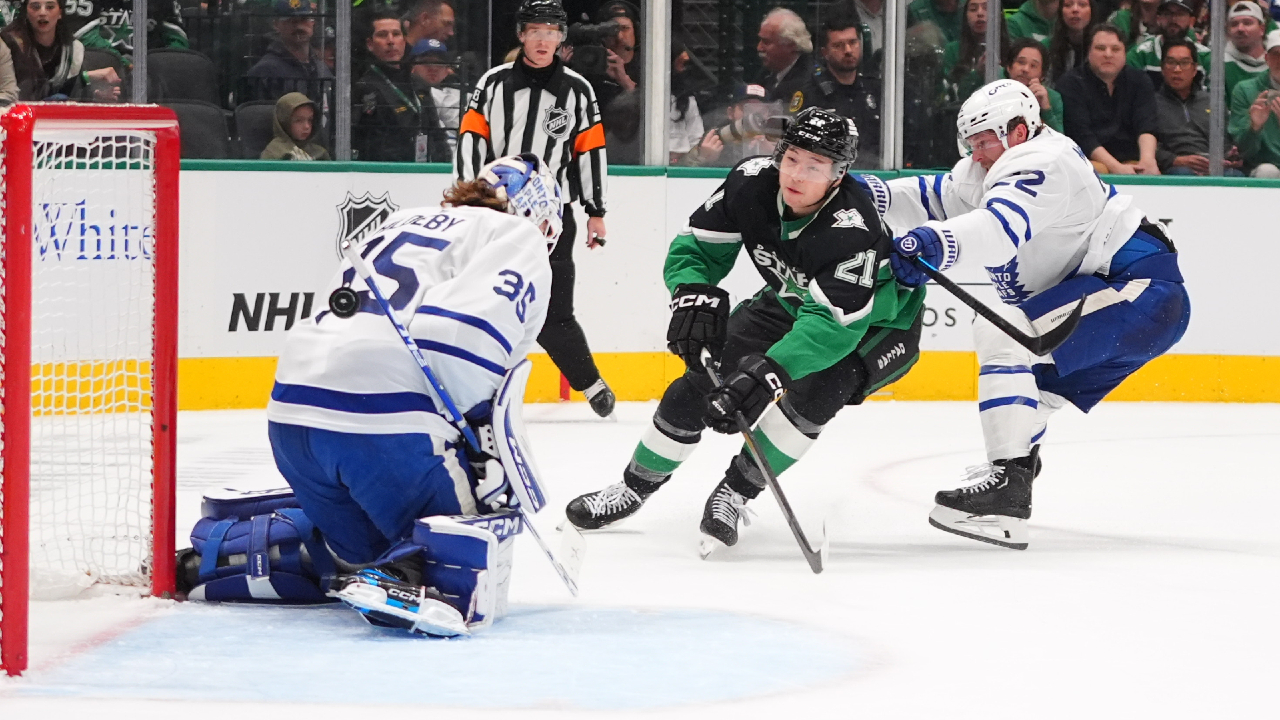
Going into the 2021-22 season, it was easy to pinpoint two Canadian teams that could be bound for the playoffs: one led by Auston Matthews, Mitch Marner, and William Nylander in the East; the other, by Connor McDavid and Leon Draisaitl in the West.
But as the Oilers are showing, it takes more than star power to be a contender.
These two teams are set to meet for the second and final time this regular season on Wednesday night. Last time around, the Maple Leafs won handily, coming ahead 5-1 in December. This time, given how everything is going in Edmonton, a similar result won’t be entirely surprising.
To open 2022, the Leafs and Oilers are trending in opposite directions, and their record shows as much. Toronto’s 7-2-1 over their past 10 games. Edmonton, on the other hand, is struggling at just 2-6-2 across. While these teams are just one slot away from each other in their respective divisions — third in the Atlantic versus fourth in the Pacific — they appear to be in very different positions.
Both teams have gone through rough patches this year. The Maple Leafs did to start the season, going just 2-4-1 before turning it around in late October. There were signs below the surface that their luck would change, but a lack of finish, especially from their best players, held them back.
But Toronto’s turned it around and looks like a legitimate contender as expected. The Oilers’ problems run deeper, and should spark legitimate change.
While the Maple Leafs’ 5-on-5 defensive play is slightly worse than last season so far, they have stability in net that gives them balance. That’s a key area where these two teams differ, because at 5-on-5 they aren’t too far off in their expected goal rates against — they’re neck-and-neck, ranking 16th and 17th in the league.
Defensively, where they depart, is on the penalty kill. The Oilers’ PK allows more shots and quality chances against, contributing to an expected goal rate of 7.37 per 60 which lands them 22nd in the league. Toronto is 12 slots higher, at 6.31 per 60.
And against those workloads, their goaltending has been quite different.
Jack Campbell’s been outstanding so far, saving 15.8 more goals than expected in all situations against all shot attempts in 24 games. That puts him third in the league behind Igor Shesterkin in New York and Frederik Andersen with the Hurricanes. While the results haven’t been as strong with other goalers between the pipes (Joseph Woll’s appeared in four games, Petr Mrazek three, and Michael Hutchinson in two), the Leafs’ starter has been one of their most important players.
In Edmonton, goaltending unsurprisingly is one of their biggest weaknesses.
Mike Smith may have held down the fort more than anticipated last season, but going into the year with a tandem of him and Mikko Koskinen again was questionable decision-making from the start.
Goaltending is considered one of the more volatile positions, which is why relying on a 39-year-old Smith to repeat an uncharacteristically strong season at this phase in his career was ill-advised. Koskinen isn’t the picture of stability, either. He’s allowed 8.5 more goals than expected in all situations over 20 games played.
To compare, Smith has saved 2.07 more goals than expected in five games, while Stuart Skinner, in 10 appearances, has stopped .37 goals above expected. While these numbers come from varying games (and minutes) played, it’s clear the Oilers don’t have the support they need in net — even though it seemed like they stepped up at points earlier in season. So as anticipated, they can’t rely on their play in the blue paint to always keep them in games.
Toronto and Edmonton don’t just differ in their own zones, either. And that’s also setting apart their chances to contend.
The Maple Leafs don’t just rely on their star power. Yes, Matthews, Nylander, Marner, and John Tavares have all been essential to the team’s success. And the ability to separate these players between different lines makes them tougher to defend. But their strength also comes from their secondary scoring, and having bottom-six contributors on offence plus depth defenders to provide some semblance of balance. That’s why the Leafs still have a good chance to win Wednesday even if Matthews is held out of play.
That’s why together Toronto generates offence at the second-best rate at 5-on-5, creating 3.13 expected goals for per 60.
That… has never been the case in Edmonton during McDavid’s tenure, which is a major reason why they haven’t accomplished much.
At 5-on-5, the Oilers have actively split McDavid and Draisaitl as much as possible to give the team two scoring lines and avoid being too top-heavy. The addition of Zach Hyman and emergence of Jesse Puljujarvi have helped boost that group, too. But their depth still lacks both on offence and defence. The team generates 2.62 expected goals for per 60 at 5-on-5 which puts them at 12th in the league — and not finishing those chances puts their actual goal rate slightly lower.

Star power can help take over games. But it can’t win entire seasons and playoff runs — especially when there isn’t enough around it to provide some support and stability. That’s the core issue in Edmonton and has been for quite some time, which is why they look more like pretenders than contenders despite having two of the best scorers in the league.
If the Oilers want to be a contender, like their Wednesday night opponent appears to be, they have to make personnel changes, first and foremost. Another depth defender, secondary scorer for the bottom-six, and ideally, a reliable goaltender who can handle the starting workload since the other half of the tandem is out again with injury.
Data via Sportlogiq





